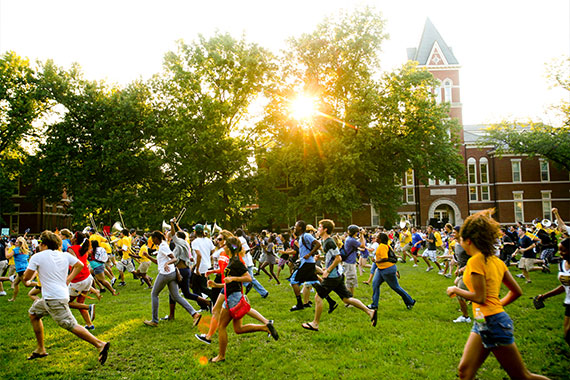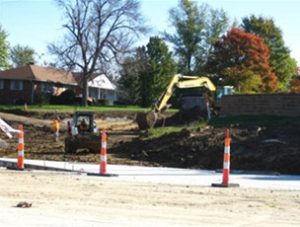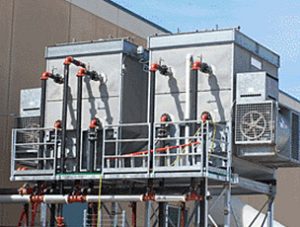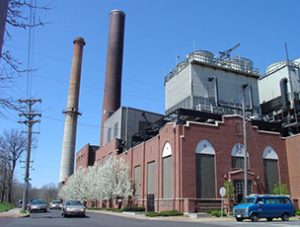
Effects of McDonalds on Younger Chinese Generation’s Lives
In 1990, when McDonalds was first introduced to China, fast food restaurants from western countries were not widely accepted in China. In fact, many Chinese had never heard about the typical menu such as French fries and hamburgers that were offered in fast food restaurants.

A Better One Mizzou: How Permaculture Can Change the Campus Climate
Walking into campus dining halls for a fulfilling dinner, college students usually have the following options: a hot dog, highly processed and covered in processed cheese substitute, a cheesy pasta with a side of grilled vegetables that are slimy and covered in oil, some frozen, mushy fruit, full of high fructose corn syrup, or a salad, complete with limp, browning lettuce, expired cucumbers and dirty celery sticks. Its no wonder that undergraduates are notorious for gaining the Freshman 15 in their first year of college, courtesy of all the times we chose the hot dog or pasta instead of a salad.

The Taiwan (Architectural) Miracle
In modern times, the ever-growing world population has caused the boom of giant cities with limited space, along with the rise of amazing places that are built to round in tourists. The allure to build and have the tallest building known to the world in ones country satisfies many needs of a blossoming city. The recent few record buildings have primarily been in Asia, and all have in some way influenced the other.

Nature’s Voice: A Review of Environmental Literature
I started this essay with the intention of crafting a new chapter, a 21st century update, to Rachel Carson's Silent Spring. What I soon found was that this task is fundamentally impossible. There cant be another Silent Spring because it isnt 1962 anymore. The context has changed. This train of thought brought me the realization that the environment of a writer is inherent in his work.

Pollution, Soil, and Columbia Missouri
Columbia Missouri is getting bigger in every aspect. From parking lots to mega apartment complexes Columbia is expanding its borders constantly. Because of this rapid growth there are many effects of the construction that takes place daily in multiple regions of this city.

Treasure Found in a Trash Heap: Composting at Mizzou
A pile of apple cores, melon seeds, half eaten bread, corn kernels, and broccoli wait on a curb in black trash bags. But this food waste has a different destination than similar trash bags. Instead of being transported to the landfill with all the other dining hall garbage that comes from the University of Missouri in Columbia, Missouri, these food scraps will be picked up and taken downtown to the corner of St. Joseph and Ash Street to be composted and then returned to the soil.

HVAC Optimization Study
Heating, ventilation, and air conditioning (HVAC) can be a very costly effort when applied in industry. So was thought to be the case at the DRS Technologies facility in West Plains, Missouri. Therefore, the Pollution Prevention Program (P2) in cooperation with the DRS Technology internship program the Cornwell Student Initiative (CSI) decided to initiate a study focusing on the optimization of the plants HVAC systems. The systems were thought to have become misapplied and inefficient resulting in additional energy consumption and excess electric and maintenance costs.

Soils: To be or not to be on campus
One-hundred thousand tons of soil per square mile per year: that is the amount of soil lost due to erosion originating from construction sites in the U.S. This statistic is from 1967 before regulations were established to address construction site erosion; however, there are still significant losses from construction sites everyday. Soil erosion has various detrimental impacts that are both environmental and economic and occur on and off-site. The United States Department of Agriculture called soil erosion the most damaging factor to soil and environmental quality in an urban area, and it is an issue that is often overlooked by developers and loosely enforced by regulatory authorities.

Energy From Unlikely Sources: MU Power Plants Road to Sustainability
The University of Missouri Power Plant has been the source of steam and electricity for the University of Missouri campus for over 85 years. Established in 1923, the plant began with only four coal burning boilers and two steam turbines. The plant now has six boilers, four steam turbine generators, two gas turbine generators, and five deep wells.

Green Building
Thinking Green is the new buzzword of the twenty-first century. There are the green IBM commercials that demonstrate a substantial amount of money saved if a business, goes green; the Mac commercial with the new energy saving computer that runs on less energy then a quarter of a light bulb; the car commercials competing for the most fuel efficiency. It seems that every individual or business in the twenty-first century is concerned with the environment and what we are putting into it.